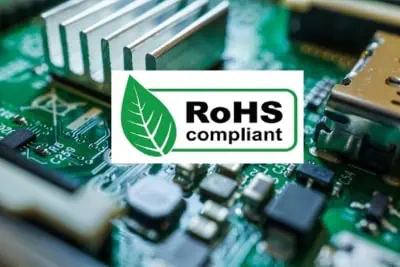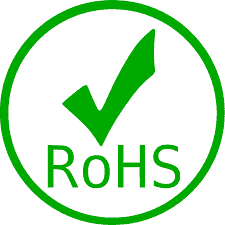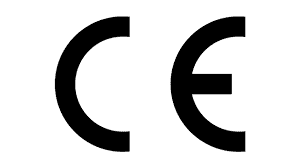When subcontracting or purchasing PCBA ( Print circuit Board Assembly), one often been asked if it need to be RoHS or not. But what is this RoHS request, and why is it important in electronics manufacturing? That is what we are going to answer in below article.
RoHS, an EU directive
RoHS directive, has first been introduced in the EU with 2002/95/CE document and has then been updated with 2011/65/EU directive with is referred as “RoHS2“. RoHS stands for “Restriction of Hazardous Substances”.
Which products need to be RoHS compliant?
All Electrical and Electronic Equipment (referred as EEE‘s in the directive), including toys, household appliances, lighting, medical device and so on.
Batteries and accumulators are not included, packaging of the equipment is also outside the RoHS directive scope.
What is the RoHS specification detail?
RoHS specify 10 hazardous elements and their maximum allowed concentration, as detailed in below chart of substance limitation:
| Element | Chemical formula | Upper limit |
|---|---|---|
| Lead | Pb | 0.1% per weight |
| Mercury | Hg | 0.1% per weight |
| Cadmium | Cd | 0.01% per weight |
| Hexavalent chromium | Cr(VI) | 0.1% per weight |
| Polybrominated biphenyls | PBB | 0.1% per weight |
| Polybrominated diphenyl ethers | PBDE | 0.1% per weight |
| Bis (2-ethylhexyl) phthalate | DEHP | 0.1% per weight |
| Butyl benzyl phthalate | BBP | 0.1% per weight |
| Dibutyl phthalate | DBP | 0.1% per weight |
| Diisobutyl phthalate | DIBP | 0.1% per weight |
Why RoHS directive?
The objective of the directive is to limit potential hazardous substances for both the environment and human health in electronics and electrical parts and assemblies.
Where is it necessary?
As it is a EU directive, its application is limited to EU countries, but other countries also voluntarily refer to it officially or not. It is important to understand that the RoHS compliance is mandatory for equipment CE certification.
How a PCBA can be RoHS compliant?
RoHS directive is directed towards reducing the use of hazardous materials in electrical and electronics equipment (EEE). Electronic boards are central composants of most of these equipment, so what are the specific concerns PCBA manufacturers and purchasers should address?
Are PCBA subject to RoHS?
For each EEE, final manufacturer should guaranty that the final part is fully RoHS compliant. In order to guaranty that, element restrictions is applied on each homogeneous materials, meaning each component of an assembly.
So compliance have to be controlled all through the supply chain. PCBA are fully integrated in the supply chain of EEE and therefore have to comply with RoHS regulation.
Requirements for RoHS conformity
Certification is to be done on a voluntary basis, relevant technical and testing documents that support this claim are to be provided in the DoC (Declaration of Conformity).
Validation, can be done internally or with external support of a 3rd party (SGS, Intertek, BUREAU VERITAS) which would give more credit to the certification.
On site or laboratory testing utilize x-ray fluorescence (XRF) in combination with chemical testing to verify RoHS
compliance. These methods provide direct measurement of restricted element concentration per weight.
What are the specific points to control on PCB assemblies ?
As we have seen above, considered as “homogeneous material”, on a PCBA each component should respect the element restriction. Bare PCB are the first part to be considered and attention should be given on the PCB finishes that should remain lead and mercury free.
Same attention should be given to the soldering material that should also not include these heavy metals. Due to the specificity of non leaded soldering, and to avoid contamination, EMS companies are using segregating production lines for lead free assembly.
Each electronic component should also be compliant, it is usually controlled by supplier declaration and XRF testing on incoming components at the EMS factories.
Attention should also be given to paints, electric cables sheathing, tin plating, and chrome plating that may be applied on connectors.
PBB and PBDE are flame retardants that are used in several plastics parts that may be used for electronic casing and insulators.
Which RoHS marking should be done on electronic boards ?
Products within scope of the RoHS 2 directive must display the CE mark, the manufacturers name and address and a serial or batch number. The “RoHS” marking by itself is not mandatory.
PCBA are usually considered elements of a EEE and therefore not subject to any specific marking request. Although, is PCBA are to be sold independently, like a graphic card for example, then it is considered as a EEE an need to be marked with “CE” and backed with a complete DoC.
What is the difference between RoHS and REACH?
While both policy are focus in reducing chemical hazard to the environment and human health, RoHS is sector specific and REACH is a general regulation act on Registration, Evaluation, Authorization and Restriction of Chemicals.
This two regulations are independent, and if overlaps occurs, the strongest restriction should apply.





